My Mother’s Cookbooks
“Just inside ‘The Art of Eating: The Collected Gastronomical Works of M.F.K. Fisher’—and, remember, my mother was, first of all, a reader, and only second, reluctantly and late, a cook—there is a two-page clipping from the glossy New York Times magazine, ‘Style & Entertaining,’ an article by Jacob Epstein titled ‘Revel With A Cause,’ its subject M.F.K. Fisher. The piece opens: ‘Midway through the 1930’s—what Auden called that ‘low dishonest decade,’ when the civilized world was working itself up yet again for one of its paroxysms of self-destruction—the American food writer M.F.K. Fisher, then in her 20’s, left her professor husband in Dijon, France, and the prospect of afternoons in a brown satin dress nibbling on marshmallow salad with other faculty wives, to pursue a relationship with a friend she had fallen head over heels in love with, an artist named Dillwyn Parrish.” Elizabeth Boleman-Herring
Ruminant With A View
By Elizabeth Boleman-Herring
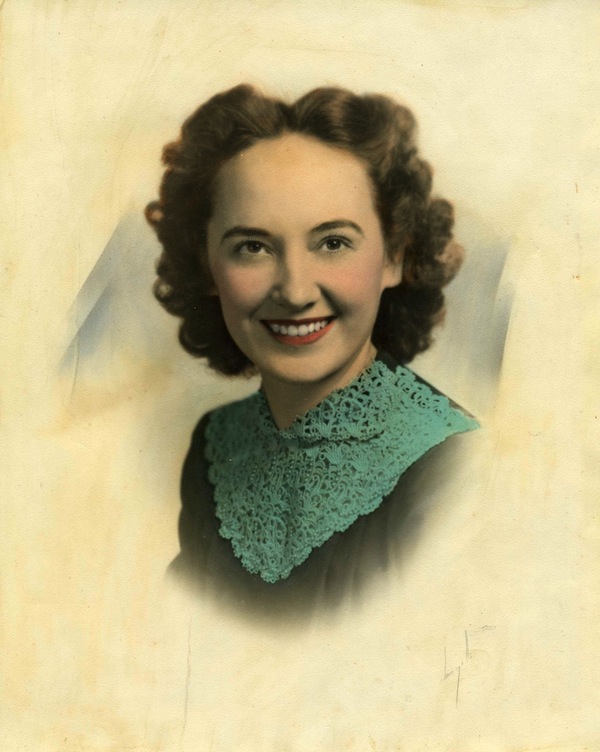
TEANECK New Jersey—(Weekly Hubris)—4/1/2013—When my mother married at 19, dropping out of Erskine College to elope with my six-years-older father, she did not know how to break an egg.
All his life, my father—very gently—would tell the story of that first egg, cracked on the side of the stove, its golden yolk traveling, more and more slowly, down the spotless white enamel, all the way to the floor.
Faced with a fresh, un-plucked chicken, c. 1936, my mother went out into the street and called in the first older woman she saw: “Please,” she pleaded, holding out the fowl in a rubber-gloved hand. “What do I do next?”
She’d grown up in a family of sisters old enough to be her mothers, and with Grandmother Abalena, and Aunts Inez and Willie Sue already holding forth in the Townville, South Carolina kitchen (with its wood-fired, pot-bellied stove, shelves and shelves of Mason jars filled with chow-chow and peach preserves, its enormous bread trough and Shaker sugar canister), there was no room for a wisp of a girl.
Instead, my mother became Townville High’s Valedictorian, learned to play the piano and sing jazz standards . . . and exited Stage Left for college; then, California, and Europe.
Elegant enough for Hollywood, my parents chose instead a life of service, fundraisers, TV series on the family and marriage, and seeming childlessness. What they ate in the 13 years before my unexpected arrival, I can only imagine: the dinners of my childhood, when my mother cooked them, were uninspired, bland, and horrifically 1950s-West-Coast-American. I remember encouraging the blue jays to steal my scrambled-eggs-and-brains and toasted Roman Meal bread (we usually had breakfast in the garden). Dinners? Minute steaks, Cream of Wheat, and endless, dull salads.
About halfway through the 1950s, thank God, my father took a cookery course at Pasadena’s Buddhist Temple, studying under the emperor’s summer chef . . . and largely took over our feeding. His Social Work students, Koreans and Middle-Easterners studying at USC and Occidental, had free rein in our kitchen, as well. Someone gave me my first, child-sized, silver chopsticks when I was five.
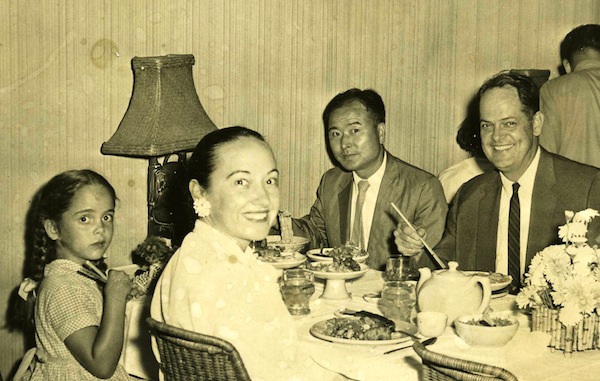
And then, when I was nine, we left for Europe, a Greek woman from Smyrna took over the kitchen in Athens, Greece . . . and my mother finally learned to cook: French sauces, Turkish stews, lamb roasted with fresh artichoke hearts or broad beans, and chicken in herbs and wine.
Having come to gourmet cuisine so late in life, she never thought to teach her daughter who, it is true, by that time, was head-over-heels in love with books and uninterested in much of anything but freezer-tray ice cream (no other sort was edible in 1960s Greece, where no milk in Attica was pasteurized), wiener schnitzel and Greek salads. Oh, I did, also, like octopus and kalamari, but those were never prepared at home when the teeming sea was so close by.
At about this same time, my mother began collecting cookbooks. And though, for some ineffable reason, I have been giving them away pall-mall over the past two years (to friends who actually cook), I have kept her (many) favorites and, more important, all the letters, photographs, recipes, newspaper clippings and memorabilia tucked by her between the books’ pages.
Here, just for example, I have a page of quarto-sized, onion-skin stationary headed “Le Grand Hotel Paris, Place de l’Opera, 12, Boulevard des Capucines.” It is addressed, on one side, simply: “Mrs Herring,” the cursive produced by a non-native-speaker (Oh, those French r’s, those Greek e’s!). On the other is a recipe, typed, for Peanut Butter Fudge. The instructions follow: 1 box of 4X sugar; 1 small can of Pet milk. Cook in double boiler until it forms a soft ball. 1 pint of peanut butter; 1 T of marshmallow whip. Fold into first mixture and beat until creamy. Cut in squares after pouring on greased marble or pan. Mrs. Herring from Florence Byrne.
I do not remember a Florence Byrne. Peanut butter and marshmallow whip were unobtainable in Europe in the early 1960s. My mother never, ever made or ate peanut butter fudge. But there the recipe is, tucked between the pages of a French cookbook, along with recipes for Miss Rose’s English Apple Pie and Mildred Davis’s Good Fudge.
Perhaps Mildred Davis had a not-so-good fudge recipe as well? We shall never know.
My mother’s favorite cookbooks—and I know which ones they were, because she read them till they fell apart though, as far as I know, never actually much “cooked from them,” I have kept.
One is titled “Chafing Dish Cookbook,” by Helen Davis Brown, published in 1950 by The Ward Ritchie Press of Los Angeles. (I suspect my mother bought a chafing dish—I have it, still—to accompany this cookbook and another, titled “Wick and Lick: A Gazette of Chafing Dish Specialties,” by Ruth Chier Rosen. However, all I can ever recall her making in it, at a meal’s end, was Cherries Jubilee, flambé, with good California brandy.)
My mother left a newspaper clipping tucked between pages 38 (“Crab Meat with Rum Rabbit”) and 39 (“Currie Anything”). On page 38, there’s also a quote from Lord Byron: “There’s naught, no doubt,/so much the spirit calms,/As rum and true religion.”
The news clipping, cut from Anderson South Carolina’s “Daily Mail,” Monday, August 31, 1959, was probably written by my Great Aunt Johnnie Price and is titled, “Late Summer Tea Fetes Mrs. James Burriss Pruitt, Jr.” The event was held in the Calhoun Hotel Ballroom, attended by 500 (including my maternal grandmother, the Ur-Cook of the Boleman clan). Newspaper copy will never read this way again, thank heaven: “Mrs. Pruitt, Jr. was attired in her wedding gown of Swiss organdy embroidered with daisies and she carried a Chantilly lace fan adorned with miniature white roses, tuberoses and lily of the valley.” Aunt Johnnie was very good on flowers, but we have no earthly idea what the 500 actually ate.
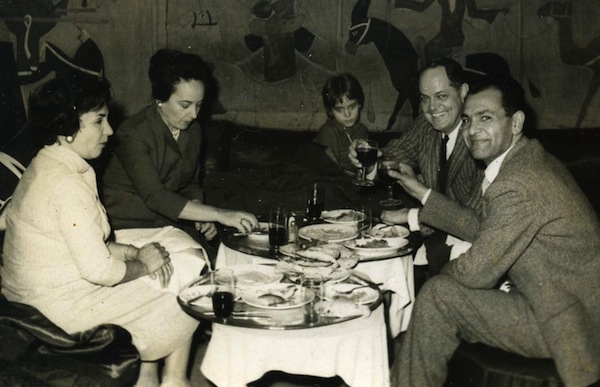
Another favorite cookbook—and this one did get some use, once Mother had spent three years under the tutelage of our Smyrna-born cook, Maria—was “The Sunset Cookbook: Food With a Gourmet Touch,” edited by Sunset Magazine’s Annabel Post, et al.
It was given her by her much older sister—one of the three allowed inside the kitchen back in Townville—Willie Sue Boleman Webb, whom we all knew as “Aunt Bill.” The inscription, “Beth, I love you—Bill, Christmas 1964” would baffle all who do not know what it is to be named something like “Willie Sue” and call yourself “Bill,” instead.
Between the pages of this book are treasures—letters and greeting cards, to my mother, from family and friends; love letters from my father; recipes—such as one for cherry cake, hand-written on Mammoth Mountain Inn stationary, to Beth, from “Ro.” It was 1964, my family had returned from Europe and were living in Chicago: I have no earthly idea who “Ro” was, but she and my mother were close. Cheek-by-jowl with that cherry cake recipe is The Two-Week Mayo Diet: the times they were a’changin.’
Just inside “The Art of Eating: The Collected Gastronomical Works of M.F.K. Fisher”—and, remember, my mother was, first of all, a reader, and only second, reluctantly and late, a cook—there is a two-page clipping from the glossy New York Times magazine, “Style & Entertaining,” an article by Jacob Epstein titled “Revel With A Cause,” its subject M.F.K. Fisher. The piece opens: “Midway through the 1930’s—what Auden called that ‘low dishonest decade,’ when the civilized world was working itself up yet again for one of its paroxysms of self-destruction—the American food writer M.F.K. Fisher, then in her 20’s, left her professor husband in Dijon, France, and the prospect of afternoons in a brown satin dress nibbling on marshmallow salad with other faculty wives, to pursue a relationship with a friend she had fallen head over heels in love with, an artist named Dillwyn Parrish. IN the articles she wrote about their love affair, she calls him Chexbres—Basque, I presume, for ‘goat’—and leaves it to readers to imagine why.”
Farther into this book, my mother has marked a chapter titled “The Measure of My Powers: 1919” with a letter. It is the only chapter marked in the book and its subject is a beautiful, slender, elegant actress, a “gourmande,” who “loves to cook rich hot lavish meals.” Her daughter, aged 8 or 9, absolutely hates her mother’s cooking, however, and will only consent to eat at all when sent to her grandmother’s, where she gorges on ice cream and mashed potatoes.
My mother died in 1992 but, oh, she can still reach out to me: “The Measure of My Powers: 1919” is a lovely gothic tale a la Isaak Dinesen, and I won’t spoil the ending for you, but do look it up.
I have also kept my mother’s Greek cookbooks, her “Good Housekeeping Cookbook” and first edition of “The Joy of Cooking,” all stuffed with recipes, clippings from hometown and exotic newspapers, and letters. I leave the inserts where I find them, as where I find them is part and parcel of their “message.” Like notes in fragrant bottles, they tell me so much about the woman who was, almost coincidentally, my mother.
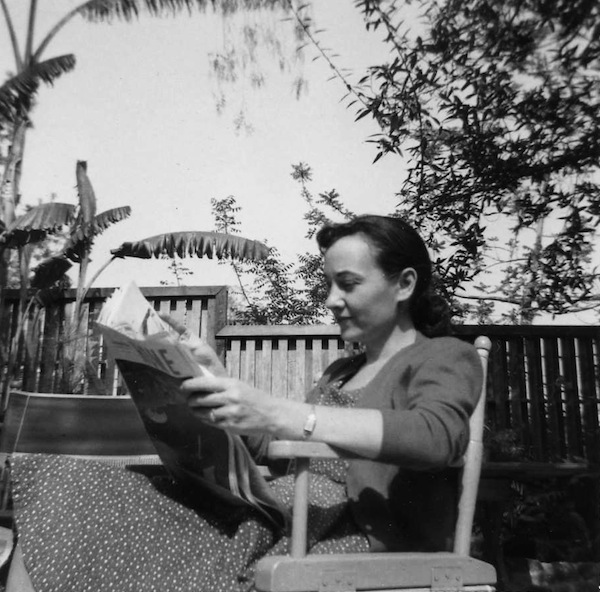
The “Sunset Cook Book of Favorite Recipes,” published in 1961 in California, bears a note, in pencil, in my mother’s perfect cursive: “Odd—I bought this book in London, England—small world.”
On page 321 is one of the simple recipes my mother pulled out every year at Thanksgiving, as none of us liked traditional pumpkin pie. I make it still and, though I eschew gelatin for the most part (and rennet’s really no substitute), I make it often according to the directions here:
Pumpkin Chiffon Pie In Gingersnap Crust
1 C strained, cooked or canned pumpkin
3 eggs, separated
1 C sugar
1 C milk
½ tsp salt
¼ tsp nutmeg
1 tsp cinnamon
½ tsp ginger
2 T melted butter or margarine
1 T plain, unflavored gelatin, softened in ¼ C cold water
Gingernsnaps
Heat pumpkin in double boiler. Mix beaten egg yolks, ½ C of the sugar, and milk. Add to pumpkin with salt, spices, and melted butter; stir and cook 5 minutes. Add softened gelatin and stir until dissolved. Remove from heat; chill. When mixture begins to thicken, fold in egg whites stiffly beaten with remaining ½ C sugar. Line a 9-inch pie pan with whole gingersnaps, rubbing sides of pan with butter to help keep gingersnaps standing. Pour in pumpkin mixture. Chill three hours. Top with whipped cream, if desired.
![]()
When I abandoned America, and most things American, and high-tailed it back to Europe with my own version of Chexbres—fulfilling, along the way, myriad unfulfilled dreams of my mother—she would send me, at great expense, boxes of gingersnaps several times a year.
I believe I have read most of her messages in bottles, and taken them to heart. I, too, have turned out to be a mediocre cook (even when I try), the daughter of a mediocre cook, but my mother “nourished” me, and nourishes me, still, though long gone. I rifle through her cookbooks, find their paper hearts still alive, and recall M.F.K. Fisher’s words: “It seems to me that our three basic needs, for food and security and love, are so mixed and mingled and entwined that we cannot straightly think of one without the others. So it happens that when I write of hunger, I am really writing about love and the hunger for it, and warmth and the love of it and the hunger for it . . . and then the warmth and richness and fine reality of hunger satisfied . . . and it is all one.”
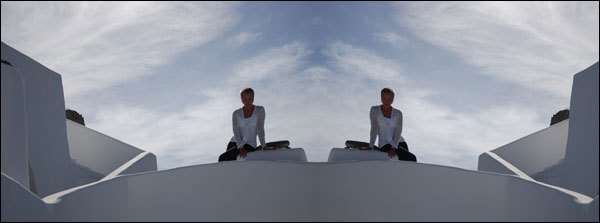
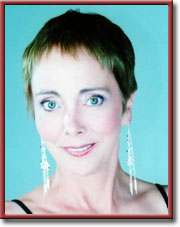

6 Comments
diana
Just beautiful. Not surprisingly, I think this is one of your best. A hard thing to say when everything you write is brilliant, but this has everything — hunger, love and warmth. I will get down my copy of the Art of Eating and reread that chapter. Need I say — to all who read this, that the recipe is equally special, and since Elizabeth gave it to me several years ago, I too make it every year for Thanksgiving.
eboleman-herring
Hunger, love and warmth: the great human trifecta. I don’t know, Diana, but all my former “subjects” of interest have just fallen away. I no longer want to write about politics and upheaval and sturm und drang, except as they have intersected my small life–but about what I know for sure. This column contained a nugget of what I know for sure. Isn’t that what distinguishes our best writing, yours and mine–everyone’s? I “hear” you in Fisher, and so hope re-reading her will inspire you. She had so much more courage than I, and was, as well, damn it, a superb cook, like you! :-) xoxoxoxoxo e
Robert Cessaro
My own mother did not enjoy cooking while I was still in residence, but came to it later, after divorcing my father. My own stirrings of cookery began as a teenager when, occasionally, I would suggest the appearance of food on the plate was important and then tried to help with its preparation and service. Later after leaving home for a tedious job in the city I began to cook for myself, learning about herbs and spices by reading the labels on their containers. At some point, in my mid 20s my cooking skills began to improve after watching a sous chef, who came with a friend to one of my little gatherings, salvage my broken Bearnaise sauce. It was magic. From then on, though I didn’t undertand it then, my desire to cook well became more intertwined with friendships and my own sense of personal worth and comfort. Eventually, it became one of the means by which I could show affection for my special circle of friends: edible hugs, as it were. I now feel more connected to the long history of cooking that satisfies, not just the need to stave off bodily hunger, but also the need for warm companionship and a return to that familiar hearth and safety from which civilization has grown.
eboleman-herring
Isn’t it funny, Robert, that your wife is one of the only people who can still recall what our mothers’ cooking was like on Crestford Drive in Pasadena in the 1950s. I’d love to have her share her own memories, as well!!!! Of course, she had a maternal grandmother from New Zealand who may have added some interesting things to our very dull pots. At prep school, I was also learning how to eat artichokes “like a lady,” and use a finger bowl. What WERE they all thinking and why was anyone eating anywhere else than in “Chinatown,” where 1950s CA cuisine was divine?
Sharon Gine'
As I read this, it’s understandable that your life experiences molded you into the person(s) that you are. While I was running barefoot and chasing “the moisquito truck” you were traveling the world and experiencing all that I didn’t even know existed. Your true cosmopolitan blase’ soul was forming. True sophistication is not creating exotic dishes but soaking in the environment that was yours at the time. While your Mom was so subtly inplanting these life lessons, she was too busy to care about motherly things like cooking. My Mom was a preachers wife that was out of her element. Instead she was reading poetry and listening to Opera. She opened up her world while stuck in a small Florida town. Finally, when I was in high school, she said screw this…I’m going back to college..and she did! She was the brunt of gossip at the church…she left her family to go to College! From that point, she never followed the “rules” of the mid ’60’s. Her room mate was a black woman. I was proud when she graduated from Stetson University. She taught school and traveled whenever she could. She was riding camels in Egypt while I was planning my wedding.
As we age, we appreciate what our Mom’s were and so ahead of the times. They inevertanly taught us to be real women. Knowledge is a grand trait. Much better than being a gourmet cook. When in college, I had black friends and gay friends. Went to gay bars with them. This, the late sixties. So my upbringing, like you, taught us to be real people, no fakes. At that point, I left the church. My “God” didn’t believe in hate or separation because of skin color or sexual orientation. So here I am. Blessed that my Mom, like yours, made me who I am today.
Elizabeth Boleman-Herring
Oh, Sharon, thank you for this! How I wish I had known your mother. Ironically, I did not find out till I was in my 50s that my father played trumpet in the . . . Stetson symphony . . . and on cruise ships to Cuba. This knowledge came to me AFTER I married my trumpet-playing husband. We know our parents, but never know them as equals; as adults. And few of us know our parents’ secrets, or their repressed dreams. But they carve out channels for us–if they can–and make the going forward easier for us, who come behind them. Your mother certainly did that for you, bless her heart. Much love, e